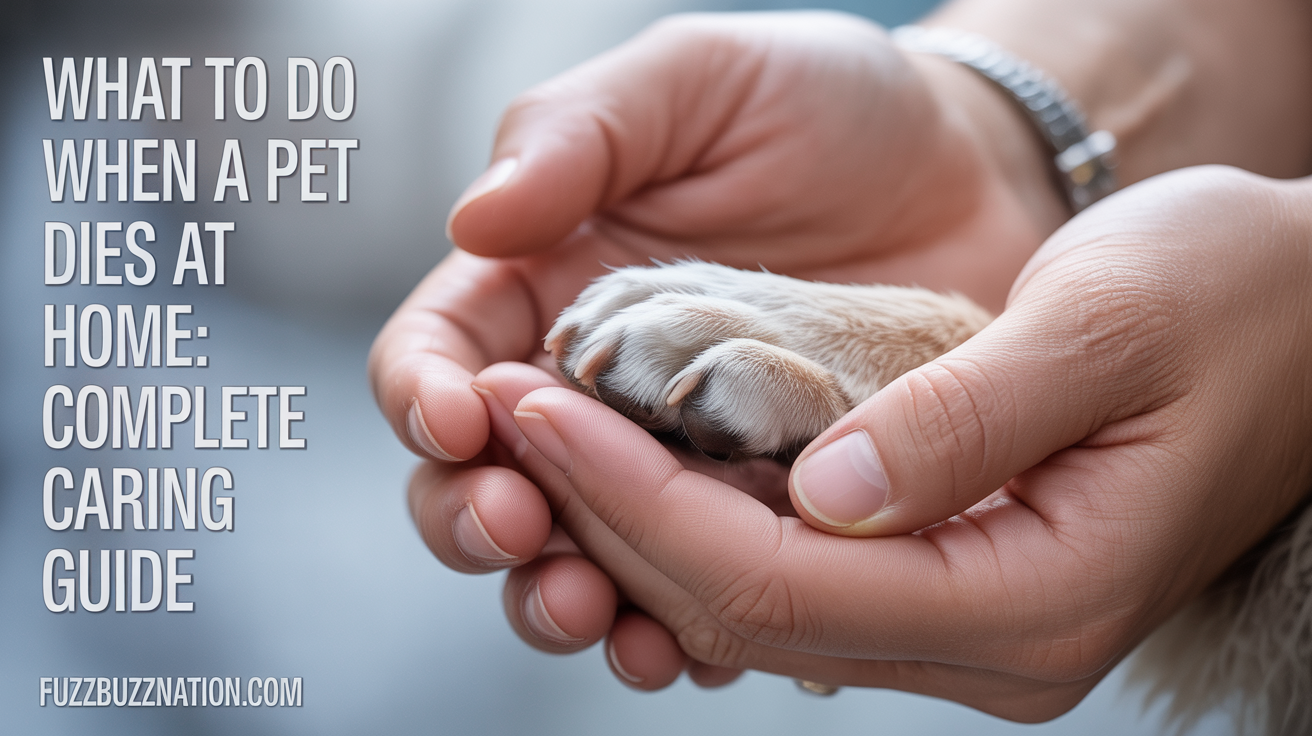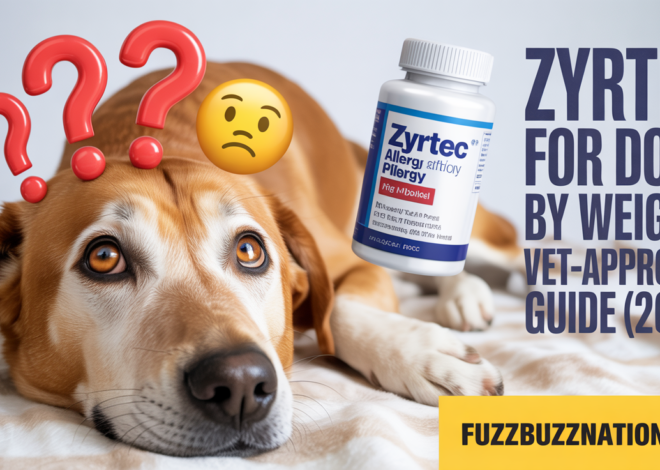
What to Do When a Pet Dies at Home: Complete Caring Guide
When a pet dies at home, the immediate steps include confirming death by checking for breathing and heartbeat, contacting your veterinarian for guidance, and deciding on body care within 2-4 hours in warm weather or 24 hours in cool conditions before decomposition begins. After supporting over 200 families through pet loss during my sixteen years as a veterinary technician and grief counselor, I’ve learned that having a clear action plan during this emotional time helps pet owners honor their companions while making necessary practical decisions about aftercare, memorialization, and supporting family members through the grieving process.
The key to navigating pet loss at home lies in understanding that there’s no single “right” way to grieve, recognizing that practical decisions need timely action even while emotions are overwhelming, and knowing that the choices you make about your pet’s remains and memorial are deeply personal decisions deserving respect and thoughtful consideration.
Confirming Your Pet Has Passed
Recognizing the Signs of Death
Absence of breathing observed by watching the chest for movement over 60 seconds confirms respiratory cessation, though some deceased pets show occasional muscle twitches that can be mistaken for breathing.
During my career, I’ve helped many owners confirm death by gently placing a hand on the chest to feel for heartbeat or holding a mirror near the nose to check for condensation from breathing.
Eyes remaining open and glazing over, body becoming cool to touch, and muscles stiffening through rigor mortis develop within hours of death, providing additional confirmation.
Loss of bladder and bowel control often occurs at or shortly after death as muscles relax, so finding your pet in soiled bedding doesn’t necessarily mean they suffered.
When to Contact Your Veterinarian
Calling your veterinarian immediately, even outside business hours, provides professional confirmation of death and guidance on next steps including body care and aftercare options.
I always recommend this call even if death was expected, as veterinarians can answer questions, provide resources, and document the death for medical records and insurance purposes.
Many veterinary offices offer emergency numbers or refer to 24-hour emergency clinics that can provide support and guidance during this difficult time.
If your pet was under hospice care or had a terminal diagnosis, your veterinarian may have already discussed end-of-life protocols making this conversation easier to navigate.
Sudden vs. Expected Death
Expected deaths from terminal illness or advanced age allow some mental preparation, though the actual moment still brings profound grief requiring compassionate self-care and support.
Sudden, unexpected deaths from accidents or acute illness create shock and disbelief that can delay processing grief, requiring extra time to accept what has happened.
Through supporting families experiencing both scenarios, I’ve found that neither path makes grief easier or harder – just different in how it unfolds over time.
Immediate Physical Care of Your Pet’s Body
Positioning and Handling
Gently placing your pet in a comfortable, peaceful position with legs extended or curled naturally provides dignity and makes later handling easier as rigor mortis develops.
I recommend positioning your pet within the first hour after death while the body remains flexible, as rigor mortis beginning 2-4 hours after death makes repositioning difficult.
Closing eyes by gently pulling down eyelids and placing damp cotton balls over them helps maintain a peaceful appearance, though eyes may reopen as tissues dry.
Wrapping your pet in a favorite blanket or towel provides physical and emotional comfort while protecting surfaces from bodily fluids that may be released.
Body Care and Preservation
Moving your pet to a cool location slows decomposition, with basements, garages, or air-conditioned rooms providing appropriate temporary storage if immediate aftercare isn’t possible.
During warm weather, body care becomes urgent within 2-4 hours, while cool weather allows 24 hours before decomposition becomes problematic for in-home storage.
Placing the wrapped body on a waterproof surface or in a plastic container prevents fluids from damaging floors or furniture during storage before cremation or burial.
I’ve helped families use ice packs around the body for short-term preservation when awaiting veterinary pickup or cremation services, though this provides only temporary solutions.
Safety and Hygiene Considerations
Wearing disposable gloves during body handling protects against potential disease transmission and makes the physical aspects of care more manageable during an emotional time.
Thorough handwashing after contact with your pet’s body, using warm water and soap for at least 20 seconds, prevents any potential health concerns from bodily fluids.
If your pet died from contagious illness, your veterinarian can advise on additional precautions protecting other pets or family members from exposure during body handling.
Deciding on Aftercare Options
Home Burial Considerations
Home burial allows keeping your pet close and provides a permanent memorial site, though legal restrictions, property ownership, and future relocation require careful consideration.
During my career, I’ve educated owners that many cities and counties prohibit pet burial or require specific depths and distances from water sources, making research essential.
Burial depth of 3-4 feet prevents scavenging animals from disturbing remains and reduces odor concerns, though rocky soil or high water tables may make adequate depth impossible.
Renters or those planning to move should reconsider home burial, as leaving a beloved pet’s remains behind often causes lasting distress when relocating.
Pet Cremation Services
Private cremation returns only your pet’s ashes in an urn or container, costing $100-300 depending on pet size and urn selection, providing portable remains for keeping or scattering.
Communal cremation cremates multiple pets together without returning ashes, costing $50-150, appropriate for owners not needing physical remains but wanting respectful disposition.
Through coordinating hundreds of cremations, I’ve learned that reputable services provide detailed tracking, witness options, and certificates confirming your pet’s individual handling.
Cremation pickup services retrieve bodies from homes or veterinary offices, usually within 24-48 hours, providing convenient options during emotional times when transportation feels overwhelming.
Veterinary Aftercare Programs
Many veterinary offices coordinate cremation services, handle body transport, and offer memorial products including paw prints or fur clippings preserving physical memories.
I’ve found that using veterinary-coordinated services ensures professional handling and provides trusted oversight during vulnerable times when researching options feels impossible.
Costs vary by location and services selected, with most veterinary offices providing clear pricing and payment options including payment plans for expensive services.
Pet Cemeteries
Pet cemeteries offer burial plots, caskets, and perpetual care similar to human cemeteries, costing $500-2,000+ depending on location and services selected.
These facilities provide permanent rest sites with visiting opportunities, though ongoing maintenance fees and distance from home require consideration before commitment.
Through visiting various pet cemeteries, I’ve seen beautiful memorial gardens providing comfort to many families, though others find the formality doesn’t match their needs.
Supporting Family Members
Helping Children Process Pet Loss
Age-appropriate honesty about death helps children process loss healthily, avoiding euphemisms like “went to sleep” that can create fear of sleeping or confusion about death’s permanence.
During my grief counseling, I’ve recommended simple language like “Fluffy’s body stopped working and won’t work anymore” that children can understand without frightening details.
Allowing children to participate in memorial activities including burial ceremonies, creating memory books, or selecting urns helps them feel involved and begin processing grief actively.
Validating children’s emotions without minimizing their pain communicates that grief is normal and their feelings matter, modeling healthy emotional expression during difficult times.
Managing Other Pets’ Grief
Surviving pets often show behavioral changes including appetite loss, lethargy, searching behaviors, or vocalization reflecting their awareness of their companion’s absence.
I’ve observed that allowing surviving pets to see and sniff their deceased companion’s body, when appropriate, can provide closure helping them understand their companion won’t return.
Maintaining normal routines including feeding schedules, walks, and playtime provides stability helping surviving pets adjust to changes while processing their grief.
Extra attention and gradual introduction of new activities helps fill voids left by deceased companions, though rushing to replace lost pets rarely helps grieving animals adjust.
Supporting Your Own Grief
Allowing yourself to grieve without judgment or timeline recognizes that pet loss grief is real, valid, and deserves the same respect as any significant loss.
Through my own pet losses and supporting others, I’ve learned that grief isn’t linear – good days and difficult days occur unpredictably requiring patience with yourself.
Seeking support through friends, family, pet loss support groups, or professional counselors provides outlets for grief that others may not understand without pet loss experience.
Taking time off work, limiting social obligations, and prioritizing self-care acknowledges grief’s physical and emotional toll requiring rest and recovery time.
Legal and Administrative Tasks
Veterinary Record Closure
Notifying your veterinarian of your pet’s death closes medical records, prevents reminder cards, and documents death for any pet insurance claims or required certifications.
I always recommend this notification even when death occurred at home without veterinary involvement, maintaining complete medical records and preventing distressing communications.
Some situations require veterinarians to report deaths to authorities including rabies cases or suspected abuse, fulfilling legal obligations protecting public health.
Pet Insurance Claims
Filing death claims with pet insurance providers within specified timeframes, usually 30-60 days, ensures reimbursement for end-of-life care, euthanasia, or cremation expenses when covered.
Documentation including veterinary records, invoices, and sometimes death certificates supports claims, with insurance companies providing specific requirements during the claims process.
Through helping owners navigate insurance claims, I’ve learned that keeping organized records throughout pet ownership simplifies this process during difficult times.
Microchip and License Notifications
Reporting death to microchip registries prevents future owners from receiving your contact information if chips are scanned during remains discovery or other circumstances.
Canceling pet licenses with your city or county stops renewal notices and may provide partial refunds depending on local regulations and remaining license validity.
Membership and Subscription Cancellations
Canceling pet-related subscriptions including food delivery, medication auto-ship, or daycare memberships prevents ongoing charges and distressing reminder communications.
I recommend making these calls when emotionally ready rather than immediately, as some owners find comfort maintaining connections briefly before fully closing these accounts.
Creating Meaningful Memorials
Physical Remembrances
Custom urns, jewelry containing ashes, or paw print art transform cremated remains into beautiful keepsakes preserving physical connections to beloved pets.
During memorial consultations, I’ve helped families select from countless options including photo albums, shadow boxes with collars, or commissioned portraits honoring their companions.
Planting memorial trees or gardens creates living tributes that grow and change, providing peaceful spaces for reflection while beautifying environments.
Charitable Tributes
Donating to animal rescue organizations, shelters, or veterinary schools in your pet’s name creates positive legacies helping other animals while honoring your companion’s memory.
Some families establish scholarship funds, sponsor shelter animals, or volunteer supporting causes their pets would have appreciated, channeling grief into meaningful action.
Through coordinating memorial donations, I’ve seen how these tributes provide purpose and comfort while supporting organizations continuing important animal welfare work.
Personal Ceremonies
Creating private ceremonies including burial services, memorial gatherings, or celebratory events allows family and friends to honor pets while sharing grief and memories collectively.
I’ve participated in beautiful ceremonies ranging from simple backyard burials to elaborate memorial services, each reflecting the unique bond between pets and their families.
Reading poems, sharing favorite memories, or creating memory videos provides healing opportunities for processing loss while celebrating the joy pets brought to lives.
Timeline for Decision-Making
Immediate (First 2-4 Hours)
Confirming death, initial body care, and contacting veterinarians or cremation services requires prompt attention, particularly in warm weather when decomposition accelerates.
Within 24 Hours
Finalizing aftercare arrangements, coordinating cremation pickup or burial, and notifying close family members allows timely handling while processing initial shock and grief.
First Week
Handling administrative tasks including insurance claims, microchip notifications, and subscription cancellations becomes manageable as initial acute grief begins transitioning to longer-term processing.
First Month
Creating memorials, organizing ceremonies, and seeking grief support provides structure for ongoing healing while honoring your pet’s memory in personally meaningful ways.
Common Concerns and Questions
Normal Grief Reactions
Crying, loss of appetite, sleep disturbances, and difficulty concentrating represent normal grief responses that typically improve over weeks to months with support and self-care.
During grief counseling, I’ve reassured countless owners that seeing or hearing their deceased pets, feeling their presence, or talking to them reflects normal coping rather than indicating problems.
Anger, guilt, or “what if” thoughts commonly accompany pet loss grief, though persistent overwhelming guilt or inability to function daily may benefit from professional grief counseling.
When Grief Feels Overwhelming
Persistent inability to function daily, thoughts of self-harm, or grief interfering with relationships and responsibilities warrant professional mental health support.
I always emphasize that seeking therapy for pet loss demonstrates strength and self-awareness, not weakness, as grief counseling can significantly improve healing and adjustment.
Pet loss hotlines and support groups provide free resources connecting grieving pet owners with others who understand the unique pain of losing animal companions.
Considering New Pets
Waiting until you can think about new pets without comparing them to your deceased companion indicates readiness for new relationships without replacement expectations.
Through my experience, rushing into new pet adoption rarely helps grief and often creates guilt when new animals can’t fill voids left by irreplaceable companions.
Some families find that fostering animals or volunteering at shelters provides animal interaction supporting healing without the commitment of immediate pet adoption.
Frequently Asked Questions
How long can I keep my pet’s body at home after death?
In cool weather (below 50°F), you can keep your pet’s body at home for 24 hours before decomposition becomes problematic. In warm weather, limit home storage to 2-4 hours unless using ice or refrigeration. Bodies begin releasing fluids and odors as decomposition progresses, requiring prompt burial or cremation arrangements. If you need more time to make decisions, many veterinary offices store bodies in refrigeration for several days while you arrange aftercare, providing a better option than extended home storage.
Is it better to bury or cremate my pet?
Neither option is objectively better – the choice depends on your personal preferences, living situation, and future plans. Home burial keeps your pet close but requires property ownership, legal compliance, and may cause distress if you move. Cremation provides portable remains you can keep, scatter, or take when relocating. Consider your emotional needs, practical circumstances, and budget when deciding. Many families find peace in either choice when it aligns with their values and allows proper grieving.
Should I let my other pets see the deceased pet’s body?
Allowing surviving pets brief, supervised access to the deceased body can provide closure and help them understand their companion won’t return. However, this isn’t necessary for all pets, and some may show no interest or distress. Watch for signs of understanding or stress, limiting exposure to 10-15 minutes. Maintaining normal routines and providing extra attention helps surviving pets adjust regardless of whether they view the body. Trust your instincts about what feels right for your specific animals.
How do I tell my children their pet has died?
Use clear, age-appropriate language avoiding euphemisms like “put to sleep” or “went away” that can confuse children. Simple explanations like “Max’s body stopped working and he died” help children understand death’s finality. Validate their emotions, answer questions honestly, and allow them to participate in memorial activities if desired. Don’t force participation, but offer opportunities for involvement. Books about pet loss can help children process grief, and maintaining routines provides stability during emotional upheaval.
Is it normal to grieve a pet as much as a human family member?
Yes, grief for pets is valid and often as intense as grief for human loved ones. Pets provide unconditional love, daily companionship, and structure to our lives, making their loss profoundly painful. Society sometimes minimizes pet loss grief, but research shows pet bereavement follows similar patterns to other grief. Don’t let others diminish your pain or rush your healing. Take the time you need, seek support from understanding people, and know that your grief reflects the depth of love you shared.
Moving Forward with Your Pet’s Memory
Healing from pet loss happens gradually, with grief intensity typically decreasing over weeks and months, though anniversaries, holidays, or reminders may trigger renewed sadness.
Honoring your pet’s memory while eventually opening your heart to new animal relationships creates space for both grief and future joy without diminishing the love you shared.
Remember that the pain you feel reflects the depth of love and connection you shared, and that love remains even as grief transforms over time.
Your pet’s legacy lives on through the joy they brought, lessons they taught, and the love they gave that continues influencing how you treat animals and appreciate life’s precious moments.


